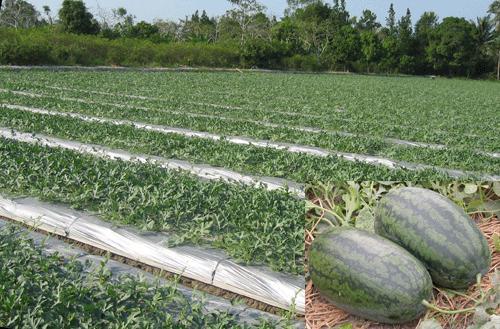In Ba Ria – Vung Tau Province, they grew nearly 200ha of watermelon, mostly in Long Dien, Dat Do and Chau Duc districts and Ba Ria City, according to the local Department of Agriculture and Rural Development.

Pham Van Quang, who grows the fruit on 2,000sq.m in Long Dien, said the yield was higher than last year since the weather was favourable.
He had a yield of 1,500 fruits, and traders bought them in advance for VNĐ10,000 a kilogramme, and he ended up earning VND15 million (US$650), he said.
“This time farmers are harvesting the fruit in time for Tet and getting higher prices than previous years.”
Most farmers sold their crop to traders around two weeks before Tet while some have decided to sell directly to end consumers.
Tu Tuat of Long Dien District said he planned to sell his watermelons at the local market during Tết since selling them to traders did not fetch a good price.
In the market the price was VND15,000 - 20,000 a kilogramme, he said.
“This year the watermelons are good looking and farmers are very happy.”
Watermelon is in great demand during Tet as a traditional fruit used for offerings on altars and eaten during the festival. Large and good looking fruits are preferred as offerings.
In HAu Giang Province’s Phung Hiep District, yields have been low but high prices have ensured good incomes for farmers.
The district, the province’s largest watermelon producer during Tet, has 265ha under the fruit this year, 100ha more than last year, according to its Bureau of Agriculture and Rural Development.
Its farmers harvested around 70 tonnes of various varieties of the fruit and signed contracts with traders at the time of cultivation.
Farmers in the southern region have grown high-yield, high-grade varieties like Phu Dong, An Tiem, Rong Xanh and Mat Troi Do.
Many use farming techniques like using plastic sheets to cover the ground to block the growth of wild grasses.
Farmers in Ca Mau City’s Ly Van Lam Commune, the largest watermelon producer in Ca Mau Province, have grown 94ha of watermelon for Tet, including 17ha grown to Vietnamese good agricultural practices (VietGAP) standards that yield an average of 30 tonnes per hectare.
They sell their fruits locally and to HCM City.
VNS
 The Tet (Lunar New Year) watermelon crop has been a lucrative one for farmers in the southern region.
The Tet (Lunar New Year) watermelon crop has been a lucrative one for farmers in the southern region.